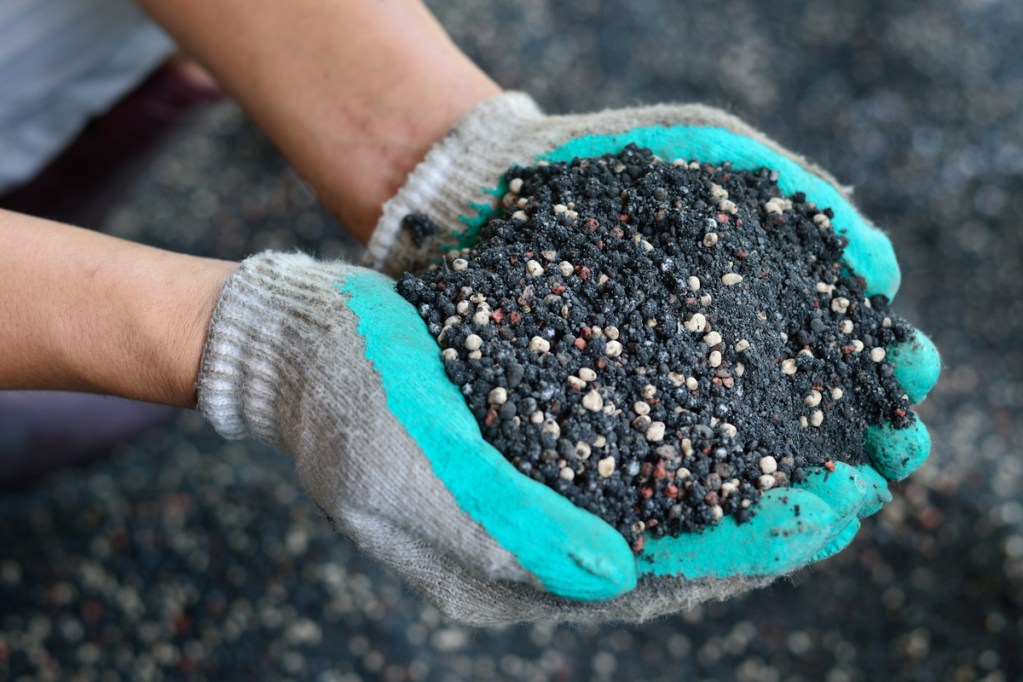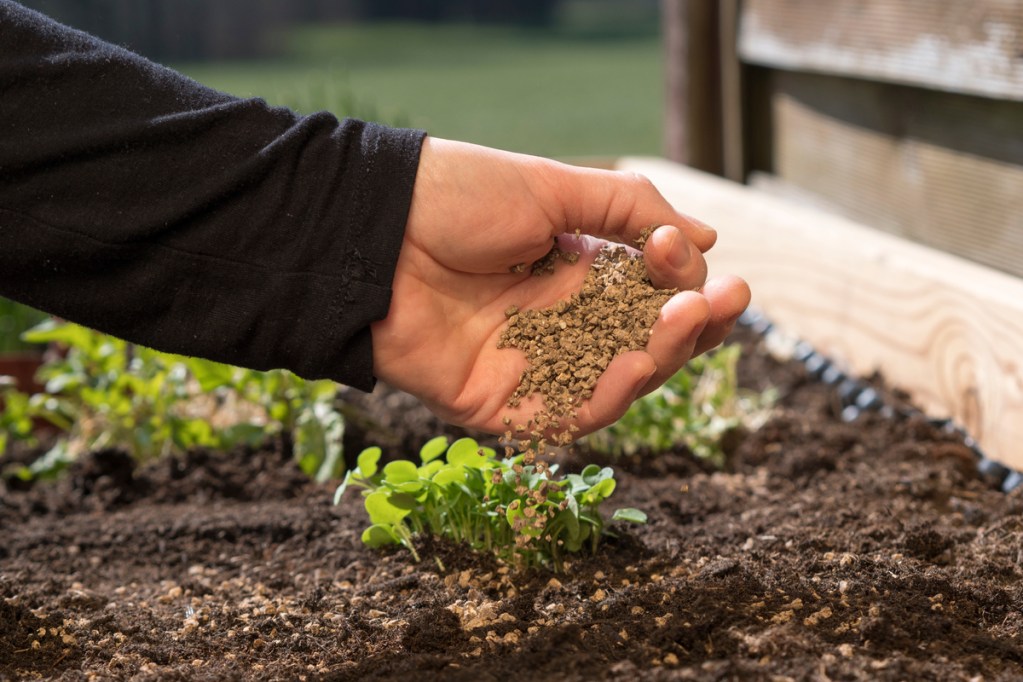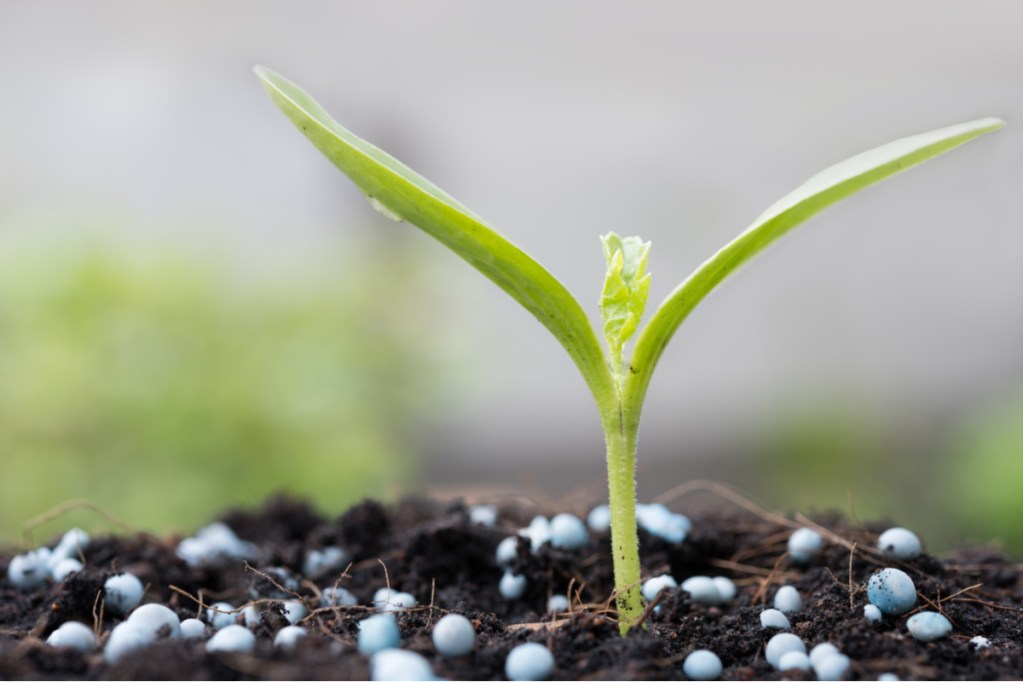
If you have been reading the ingredients on a bag of potting soil or have taken an interest in creating your own soil blends, then you might have come across the word vermiculite. It’s used in a variety of gardening products, but what is vermiculite, and what does it do? Is it completely safe, or are there risks you should be aware of? Don’t worry — we’re here to help!
This guide will answer all your questions about vermiculite, so you can use it in your own garden or just have a better understanding of the products you’re already using.
What is vermiculite?

Vermiculite is a rock, often coming in shades of brown, white, or gray. It is a naturally occurring mineral that’s harvested through mining before being broken into smaller pieces for use in gardening, among other things. Vermiculite can be found on its own or pre-mixed into potting soil and other gardening products.
If you’ve ever looked through a bag of potting soil and found a small pebble, it was most likely vermiculite, which is sometimes confused with perlite. Both are used in soil mixes and have similar-sounding names, but they’re easy to distinguish visually and texturally. Unlike the little pebbles of vermiculite, perlite takes the form of small white balls that feel like Styrofoam.
How is vermiculite used?

Vermiculite has a variety of non-gardening uses, such as insulation, but for gardening, it’s primarily used as a soil additive or growing medium. When mixed with soil, it loosens dense soil and allows for better aeration and drainage. Vermiculite is also absorbent, taking in water and releasing it slowly over time for your plants to drink. This also helps plants absorb nutrients more easily. While vermiculite is most commonly added to potting soil, it can be used in traditional gardens and raised garden beds as well.
In addition to its use as an additive, vermiculite can be used as a growing medium. This is most commonly used for germinating seeds, as the absorbent property of vermiculite helps keep the seeds moist. Some gardeners also use vermiculite as mulch. Vermiculite is a good insulator, which helps keep the soil and your plant’s roots warm during cold weather.
Are there risks or drawbacks to vermiculite?

Using vermiculite doesn’t carry any major risks to your plants as long as you use it correctly. However, there are a few more general drawbacks to be aware of. Vermiculite is mined, and like all mining operations, carries environmental risks and negative impacts. Environmentally conscious gardeners might want to look for more friendly alternatives. Additionally, vermiculite can give off dust while being handled. This dust, like most other dusts, can irritate your eyes, nose, lungs, and potentially skin. Wearing protective gloves and handling vermiculite in an outdoor or well-ventilated space is recommended.
Another potential concern with vermiculite is asbestos. Vermiculite mines and products were often tainted by asbestos in the past. Regular testing is in place to ensure that vermiculite products don’t contain asbestos, but it is still a possibility and a concern for many. Only purchasing vermiculite products from reputable sources and handling your vermiculite with care are ways to mitigate this risk, but another option is to use a vermiculite alternative.
Alternatives to vermiculite

If the drawbacks of vermiculite give you pause, then you might be interested in the two close alternatives. We’ve already mentioned perlite, the small white balls that are sometimes in potting mix alongside vermiculite. It feels like Styrofoam, but in actuality, it’s a type of volcanic glass that has been heated to make it expand. Perlite can improve the drainage and aeration of soil, and it’s a lighter weight than vermiculite. While it can help with water retention as well, it isn’t as effective as vermiculite.
Pumice is the other option, which you may already be familiar with in the form of pumice stones. Garden pumice is broken into smaller pieces, which function much like vermiculite does. It’s great for improving drainage and soil aeration, and it is porous. This makes it lighter and easier to use and also excellent at water retention. While it may seem like a perfect alternative, it is less readily available and more expensive than vermiculite and perlite.
Now that you know all about vermiculite and its alternatives, you’re prepared to choose the best one for your garden. No soil additive is perfect, but there are many benefits to using vermiculite. If you have dense soil that needs to be broken up to allow air and water to pass through more easily, then vermiculite is a good option to consider. If the risks outweigh the benefits for you, then perhaps perlite or pumice will be a better choice.